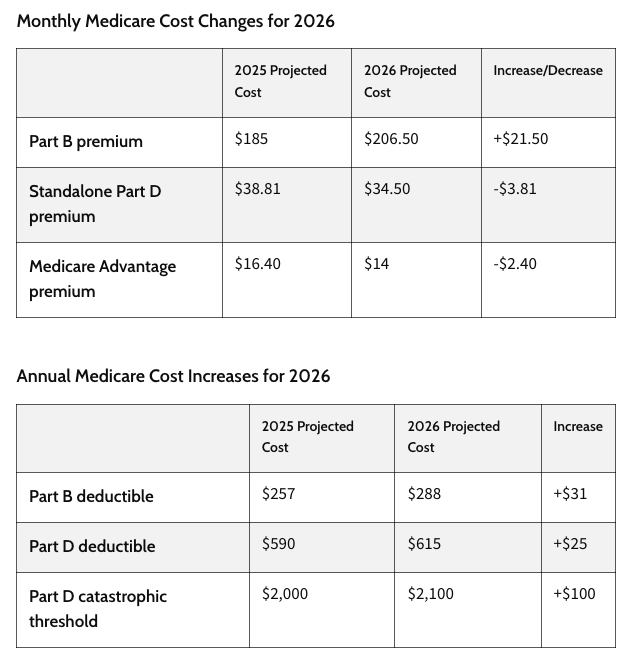Medicare enrollees face a turbulent year ahead as sweeping changes to costs, coverage, and eligibility take effect in 2026.
While some measures promise long-term savings, others could strain older Americans’ budgets and complicate access to care.
The most immediate hit comes from rising costs. Monthly Part B premiums are projected to climb 11.6% to $206.50, while the deductible will increase to $288. Part D drug plan deductibles will also rise, reaching $615.
These jumps reflect inflation and rising health care expenses, which continue to outpace income growth for many retirees.
“The lower your income, the more fixed your income, the more you’re going to feel it,” said George Huntley of the Diabetes Patient Advocacy Coalition.
Not all costs are heading upward. Average premiums for Medicare Advantage and standalone Part D plans are expected to fall slightly, although prices will still vary widely across private insurers.

The modest reductions are unlikely to offset the broader inflationary pressure, particularly for seniors managing chronic conditions.
Drug affordability remains a central focus. The Inflation Reduction Act’s cap on out-of-pocket prescription costs will rise from $2,000 to $2,100, and new negotiated prices for ten widely used drugs, among them Eliquis, Jardiance, and Xarelto, will take effect.
Insulin users could see even greater relief, with new rules allowing payments lower than the current $35 cap if negotiated prices fall further.
Elsewhere, Medicare Advantage plans will lose some flexibility over supplemental benefits. From 2026, insurers will be barred from covering non-essential items such as alcohol, tobacco, and life insurance under chronic care benefits.
Critics say the changes could narrow choices, but others argue they will refocus the programme on essential medical needs.
A six-state pilot scheme will also extend prior authorisation requirements to more Original Medicare services, a move that has already drawn scrutiny over fears it could delay care.
Meanwhile, new administrative rules tied to the GOP’s “One Big Beautiful Bill Act” are expected to make it harder for low-income seniors to retain Medicaid coverage alongside Medicare.
With open enrolment beginning 15 October, experts urge beneficiaries to review their plans closely.
Formularies, provider networks, and costs are all in flux, and complacency could prove expensive. For many, 2026 will test not just Medicare’s resilience but the affordability of ageing itself.